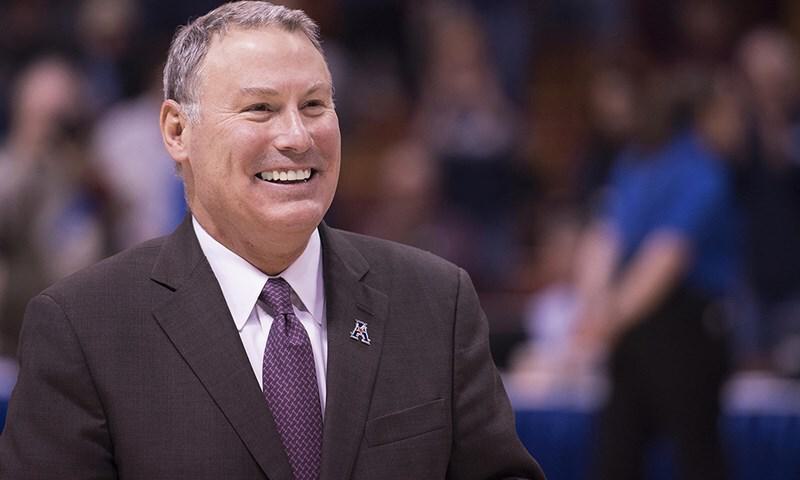The question would have been asked eventually. But Mike Aresco, Commissioner of the American Athletic Conference, didn’t wait; he asked the question himself.
“What will happen after this year, when Cincinnati, Houston and UCF depart?” Aresco said during his state of the conference address during AAC Media Day, which was shown virtually on Thursday.
That is a question that many have asked and, truthfully, only time will tell. However, Aresco gave his opinion.
“We will pick up where we left off,” Aresco said. “We have quality incumbent teams, and several are now regaining their former strength. Ten of our eleven schools return their starting quarterbacks, and Cincinnati has two veterans engaged in a healthy competition. We are adding six excellent programs next year, all of which will thrive in our conference. They have already made their mark in their current conference.”
UAB is one of the incoming members, joining C-USA brethren North Texas, UTSA, Charlotte, Rice and FAU. UAB, UTSA and FAU have combined for the past five C-USA football championships. They will join with Tulsa, Tulane, Memphis, Navy, Temple, South Florida, SMU and East Carolina to form a new look AAC in football. Wichita State, which does not play football, is also an AAC member in basketball and Olympic Sports.
“Looking ahead, we are well-positioned,” Aresco said. “We are in four of the top 10 media markets. Our markets compare very favorably to those of the Big 12 and PAC 12. We will continue to be an elite conference with elite athletes who relish competing at the highest level. We will continue to attract talented, gifted, dedicated, chip-on-the-shoulder players. We will do this by continuing to hire good coaches, by competing effectively on the biggest stages, by continuing to take advantage of our outstanding ESPN TV exposure, by scheduling intelligently, by offering a quality education to our student-athletes, and by offering thoughtful [Name, Image Likeness (NIL)] opportunities, among other things.”
Aresco, the only commissioner in AAC history, has been aggressive in marketing the conference since its inception in 2013. He will continue that into an unknown future in college athletics. Cincinnati became the first Group of 5 team to make the BCS playoffs, losing to Alabama in last season’s national semifinals. Aresco is one who is pushing for a football playoff expansion to 12 teams with the six highest ranked conference champions and six highest ranked at-large teams.
“My open letter to college football described the rationale and merits of the 12-team 6-6 model, and events that have happened since have actually strengthened the need for that or a similar model,” Aresco said. “A 16-team model is being floated and discussed in an effort to provide more at-large spots, and that is something we should consider. I will be discussing a 16-team model with my conference and my fellow commissioners.”
Aresco is willing to continue his fight to obtain a prominent spot for the AAC in the future.
“It has been suggested over the past several years that we should set our sights lower,” Aresco said. “We have been told that we should know our place and accept second-class status and enjoy whatever achievements we can muster at a lower level of competition and commitment. The unfortunate G5 designation has fueled that attitude and has fueled damaging perceptions and media inattention to our considerable achievements on the field and court and to our considerable influence in CFP and NCAA councils.”
Aresco said the efforts have paid off.
“Cincinnati would never have made the college football playoff, a historic and seminal achievement, if we had taken that advice,” Aresco said. “We would not have appeared in seven New Year’s bowls over nine years had we taken that advice.”
To connect with the author of this story, or to comment, email steve.irvine@1819news.com.
Don’t miss out! Subscribe to our newsletter and get our top stories every weekday morning.










